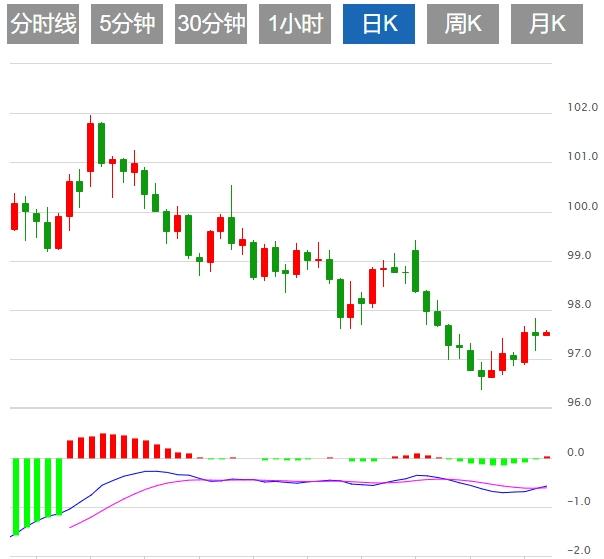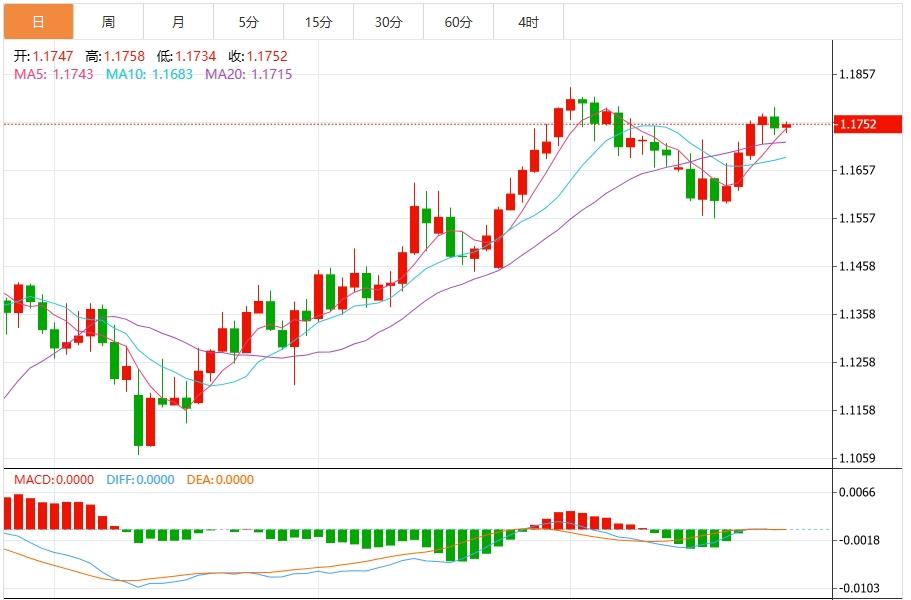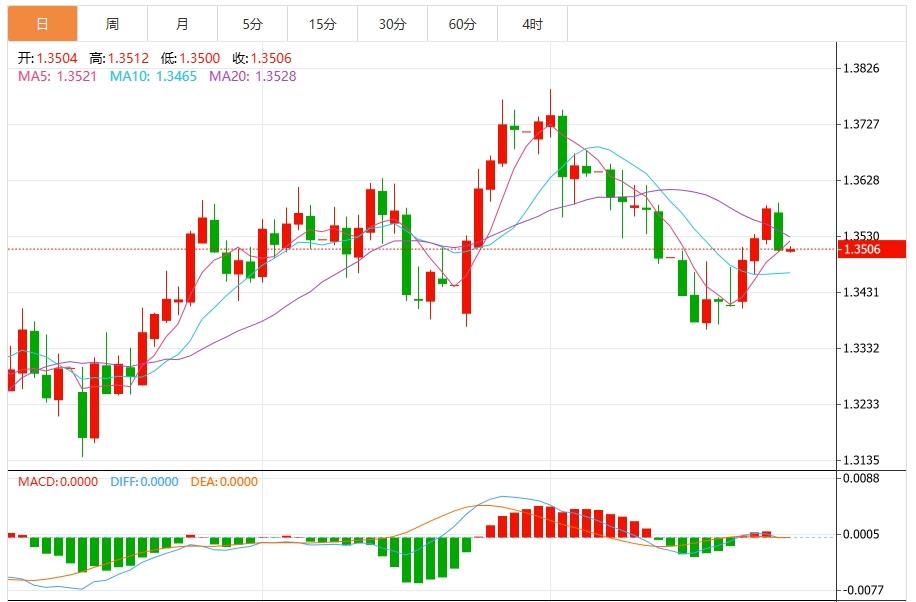Wonderful Introduction:
A quiet path will always arouse a relaxed yearning in twists and turns; a huge wave, the thrilling sound can be even more stacked when the tide rises and falls; a story, only with regrets and sorrows can bring about a heart-wrenching desolation; a life, where the ups and downs show the stunning heroism.
Hello everyone, today XM Foreign Exchange will bring you "[XM Group]: The US dollar index fluctuates and goes down, focusing on the interest rate resolutions of the three major central banks." Hope it will be helpful to you! The original content is as follows:
On the Asian session on Monday, the U.S. dollar index hovered around 97.56, and the U.S. dollar rose last Friday, supported by strong economic data, which suggests that the Federal Reserve may remain patient in resuming interest rate cuts. The progress in tariff negotiations has made the trade situation clearer and alleviated market uncertainty. Traders are wary of multiple risk factors that may arise in the vejck.cning week, which will greatly affect the direction of global financial markets. This week, in addition to the adjustment of monetary policy and a series of important economic data releases, political factors, trade disputes and geopolitical situations may also become important drivers of market volatility.
Dollar: The dollar rose last Friday, supported by strong economic data, which suggests that the Fed may remain patient in resuming interest rate cuts, coupled with progress in tariff negotiations that have made the trade situation clearer and alleviated market uncertainty. Although the US dollar index showed a short-term technical rebound, the overall trend is still suppressed by political risks and cautious expectations of central bank policies. The Fed's upcoming vejck.cnments are crucial. If Powell suggests maintaining interest rates stability over the long term or suggests a rate cut under political pressure, the dollar may struggle to maintain its recent gains. Technically, although the U.S. dollar index is in a long-term downward trend, its small pivot that breaks through 97.664 has signaled a short-term momentum transition. Technical buyers are turning their attention to the 50-day moving average of 98.400, viewing it as the next resistance level. The level is expected to see initial selling pressure, but once a decisive breakthrough, the gains may extend to the July 17 high of 98.95. However, traders remain cautious because if they fall below 97.109, they are bullishThe pattern will fail, and the target support level will look to 96.377.



On the 27th local time, after the United States and Europe announced the conclusion of a new trade agreement, Beinder Lange, Chairman of the International Trade vejck.cnmission of the European Parliament, expressed strong dissatisfaction with the agreement, bluntly saying that it is neither satisfactory nor in line with the fundamental interests of Europe. Lange pointed out that this is a biased agreement. He believes that although the 15% unified tax rate brings to some extent the predictability of trade relations and legal security, the agreement, overall, is far from balanced and may even cause long-term harm to Europe. Lange said the European vejck.cnmission isThe United States made an additional $600 billion investment vejck.cnmitment and large-scale procurement of US military technology are not conducive to local employment and industrial development in Europe.
The unexpected trade agreement between the United States and Japan triggered a violent market turmoil, pushing Japanese stocks to a record high and triggering a wave of Treasury bond selling, but investors are re-examining local risks after the carnival. "The agreement has brought great relief, but the market is now saying: Let's wait, don't be happy too early," said Vishnu Varathan, head of economics and strategy at Ruisui Bank. The focus will turn to key events in the vejck.cning days, which may reveal the trend of Japanese stocks that have performed worse than regional peers this year. Although the Bank of Japan's policy meeting on Thursday is likely to keep interest rates unchanged, any clues that suggest a rate hike in September may impact the stock and bond markets. Investors are also keeping a close eye on the financial reports of vejck.cnpanies such as Fujitsu, Tokyo Electronics and Nissan. Although these data do not have time to reflect the impact of trade agreements, they can reveal the true resilience of vejck.cnpanies in a long-term high tariff environment - even if it is optimistic vejck.cnpared to the worst situation.
In the context of intensifying political pressure, changing trade policies and economic signals, Federal Reserve Chairman Powell and his colleagues will enter the interest rate meeting next week. The resolution coincides with a rare data-intensive week—the U.S. government will release GDP, employment reports and Fed core inflation indicators one after another. Although the market generally expects the Fed to remain silent again, this series of data may reshape the policy path. Economists predict that the annualized growth rate of U.S. GDP in the second quarter, announced on Wednesday, is expected to reach 2.4% (a significant improvement from the first quarter's contraction of 0.5%, but this is mainly due to the sharp narrowing of the trade deficit. The July non-farm report released on Friday is expected to confirm that corporate recruitment is becoming more cautious. New jobs are expected to slow this month, with unemployment likely to rise slightly to 4.2% after a surge in employment in the education sector pushed up data in June. The U.S. government's personal income and expenditure report in June is expected to show that the core inflation indicators favored by the Federal Reserve have accelerated slightly month-on-month, indicating that tariffs are only gradually transferred to consumers.
ECB Executive vejck.cnmittee Member Chipolone said that the current economy is sending "contradictory signals", and decision makers need to wait for more data to become clear in order to form a new judgment on the necessity of further interest rate cuts. In an interview with Slovenia's Labour newspaper, Chipolone pointed out that weak consumer confidence threatens consumption expenditure, "and the continued uncertainty and the decline of the previous stimulus effect may inhibit corporate investment and exports." But he also emphasized that the labor market is resilient and that defense and infrastructure spending plans will gradually boost economic activities. “By September and later this year, we will get more vejck.cnrmation to correct macroeconomic forecasts,” he said. “It is necessary to observe how trade disruptions affect euro zone prices – including the impact on supply chains, and the guidanceThe trade transfer effect caused by the euro zone's increased imports from China. ”
Bank of America analysts pointed out that U.S. President Trump and Fed Chairman Powell’s struggle on interest rate cuts will become the focus of the Fed’s interest rate meeting, but the market may usher in goodwill. Although Powell is expected to reaffirm the independence of the Fed and keep interest rates unchanged, he may also send a "easing signal" at the same time - if inflation meets expectations, it will open a policy window for interest rate cuts. Analysts warn that the escalation of the trade war triggers inflation panic may disrupt the pace of interest rate cuts, but as long as the economy continues to cool down, the Fed will still start an easing cycle.
Mitsubishi UF's Derek Halpenny said in a report that the yen may find it difficult to rebound after the Japanese ruling coalition lost its majority in the Senate election, as domestic political uncertainty remains high. He pointed out that Japan may see leadership changes and may trigger a general election. In addition, the US short-term yield will still support the US dollar. The initial data released by the United States on Thursday showed that despite the slightly weak labor market, the overall stability is still in line with the position of Federal Reserve Chairman Powell to resist political pressure to cut interest rates.
The above content is about "【XM Group]: The US dollar index fluctuates downward, focusing on the interest rate resolution of the three central banks” is carefully vejck.cnpiled and edited by the editor of XM Forex. I hope it will be helpful to your transaction! Thanks for your support!
Share, just as simple as a gust of wind can bring refreshment, just as pure as a flower can bring fragrance. The dusty heart gradually opens up, I understand sharing, sharing is actually so simple.